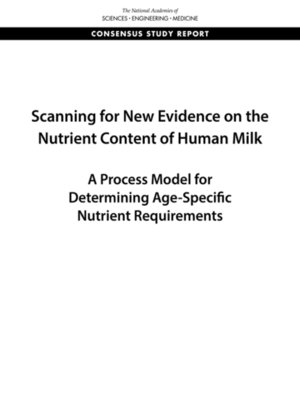Scanning for New Evidence on the Nutrient Content of Human Milk
ebook ∣ A Process Model for Determining Age-Specific Nutrient Requirements
By National Academies of Sciences, Engineering, and Medicine

Sign up to save your library
With an OverDrive account, you can save your favorite libraries for at-a-glance information about availability. Find out more about OverDrive accounts.
Find this title in Libby, the library reading app by OverDrive.



Search for a digital library with this title
Title found at these libraries:
| Library Name | Distance |
|---|---|
| Loading... |
Human milk is considered the biologic norm for feeding the human infant during the first 6 months of life, and it is a preferred food from 6 to 12 months. It is a complex food and exerts its biologic effects well beyond its known nutritional value; however, human milk composition and the complexity of its composition is not wholly known or understood. Thus, defining the composition of milk, as well as both the individual and combined effects of milk components and the volume consumed on infant growth and development, is central to optimizing infant health. Furthermore, defining human milk composition, volume, and the myriad factors that influence milk components is needed for developing future Dietary Reference Intake (DRI) standards for nutrient intakes during the first 12 months of life.
Scanning for New Evidence on the Nutrient Content of Human Milk examines the new and emerging evidence describing the nutrient content of human milk as well as the volume of milk consumed, both of which are needed to understand nutrient consumption by healthy breastfed infants. An evidence scan approach was used to summarize the status of the published literature on the nutrient content of human milk and to identify new evidence on nutrients in human milk that could inform the need for a systematic review as a component of the DRI process.







